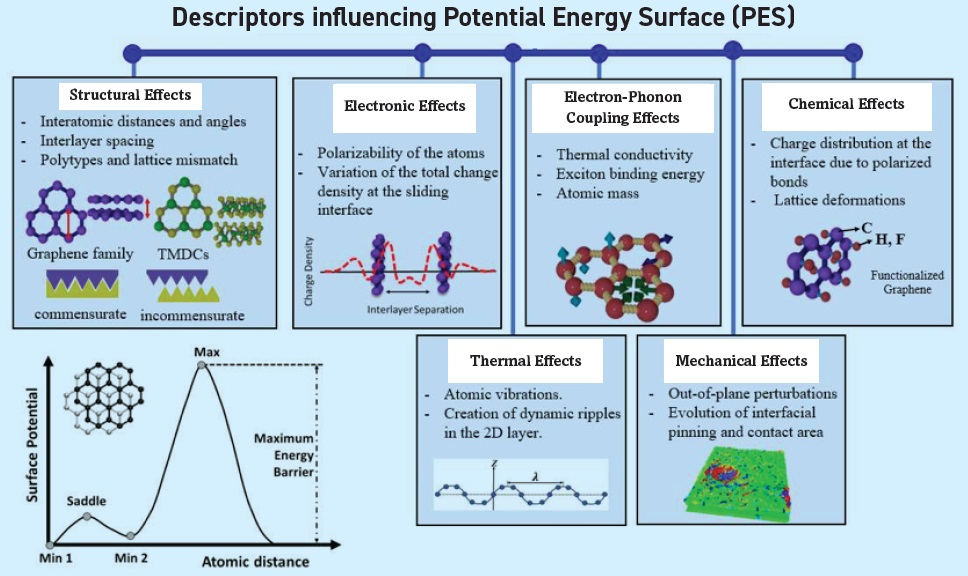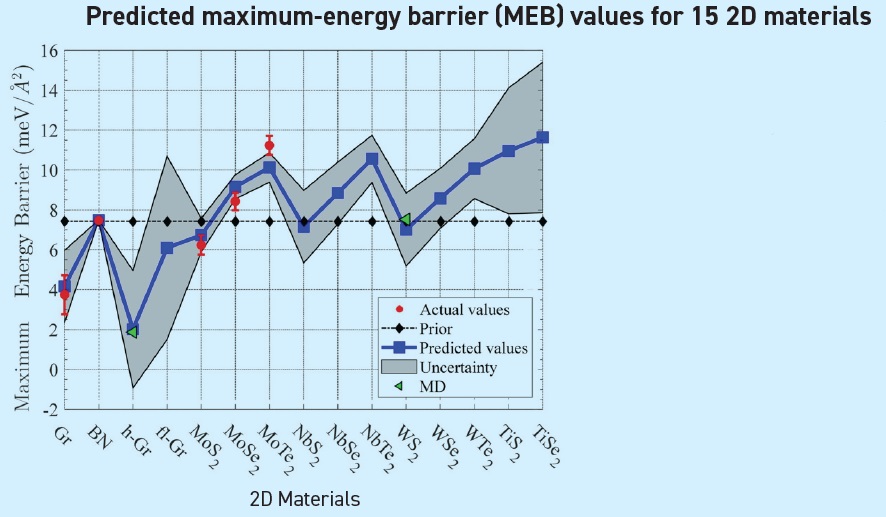Designing lubricants by artificial intelligence
Drs. Wilfred T. Tysoe & Nicholas D. Spencer | TLT Cutting Edge June 2020
Machine learning can be used to design and select the best two-dimensional material to use as a lubricant.
There has been much discussion in the press about artificial intelligence being used for purposes such as facial recognition, but it also can be used for more scientifically useful tasks such as designing new materials. For example, two-dimensional (2D) materials such as graphite and molybdenum disulfide have been extensively used as lubricants for many years, but novel synthetic and computational methods have identified over 6,000 novel 2D structures. Synthesizing and testing all of these materials as lubricants would be impossible. To address this, professors Prathima Nalam, Kristopher Reyes and graduate student Behnoosh Baboukani from the University at Buffalo, in collaboration with professor Justin Ye of Miami University, have shown how machine learning can be used to select the best 2D lubricants.
All hexagonal 2D materials have characteristic potential-energy surfaces for the layers sliding over each other, where the minimum-energy pathway has a typical two-peaked structure, as shown in the bottom-left-hand graph in Figure 1. The largest peak, known as the maximum-energy barrier (MEB), controls the friction, and therefore the goal is to select 2D materials with low MEB values.
In order to use machine learning to predict which are low-MEB 2D materials, a series of “descriptors,” or properties that might correlate with the MEB, are needed, and examples of possible descriptors are shown in Figure 1.
 Figure 1. Atomic mechanisms influencing the corrugation of the potential-energy surface during interlayer sliding in 2D materials in an inert environment. The inset illustrates the surface potential for sliding of a 2D material, showing the maximum-energy barrier for two graphene layers. (Published with permission from Springer-Nature.¹)
Figure 1. Atomic mechanisms influencing the corrugation of the potential-energy surface during interlayer sliding in 2D materials in an inert environment. The inset illustrates the surface potential for sliding of a 2D material, showing the maximum-energy barrier for two graphene layers. (Published with permission from Springer-Nature.¹)
To test this approach, 15 2D materials were selected for which values were known for the descriptors and for which the values of the MEB were either already known or were calculated as part of this work.
The final step is to use a statistical formula developed by Rev. Thomas Bayes, an 18th century English clergyman, to optimize the relationship between the descriptors and the MEB. Bayesian statistics provides a method for improving the estimate of the probability that a particular event will occur in the light of new evidence. As a simple example, the probability that the next person you will encounter has above average height is 50%. However, if you happen to be at a basketball convention, where the height distribution probably differs substantially from the average population, the probability will be greater than 50%. Reverend Bayes gave us a simple formula to calculate by how much.
The formula also allows a computer to be “trained” to estimate MEB values of 2D materials from their properties (descriptors), and the results, shown in Figure 2, demonstrate that it does a remarkably good job.
 Figure 2. Predicted maximum-energy barrier (MEB) values for 15 2D materials using Bayesian modeling and transfer-learning techniques. The red circles represent MEB values for the five 2D materials extracted from the literature and the blue squares represent the predicted values in this study. The green triangles represent the PES values estimated from molecular dynamics simulations. (Published with permission from Springer-Nature.¹)
Figure 2. Predicted maximum-energy barrier (MEB) values for 15 2D materials using Bayesian modeling and transfer-learning techniques. The red circles represent MEB values for the five 2D materials extracted from the literature and the blue squares represent the predicted values in this study. The green triangles represent the PES values estimated from molecular dynamics simulations. (Published with permission from Springer-Nature.¹)
Of course, not all of the properties turned out to be good descriptors for the MEB and the authors were able to test this by measuring the effect of removing a descriptor from the calculation. This information will enable future searches for low-friction 2D materials to be performed more rapidly and will help identify which of the potential 6,000 candidates should be investigated more carefully. It also will provide clues to fundamental scientists for useful avenues of research to pursue in the future.
FOR FURTHER READING
1.
Baboukani, B., Ye, Z., Reyes, K., Nalam, P.C. (2020), “Prediction of Nanoscale Friction for Two-dimensional Materials using Machine Learning Approach,”
Tribology Letters,
68, Article 57.
Eddy Tysoe is a distinguished professor of physical chemistry at the University of Wisconsin-Milwaukee. You can reach him at wtt@uwm.edu.
Nic Spencer is professor of surface science and technology at the ETH Zurich, Switzerland, and editor-in-chief of STLE-affiliated Tribology Letters journal. You can reach him at nspencer@ethz.ch.